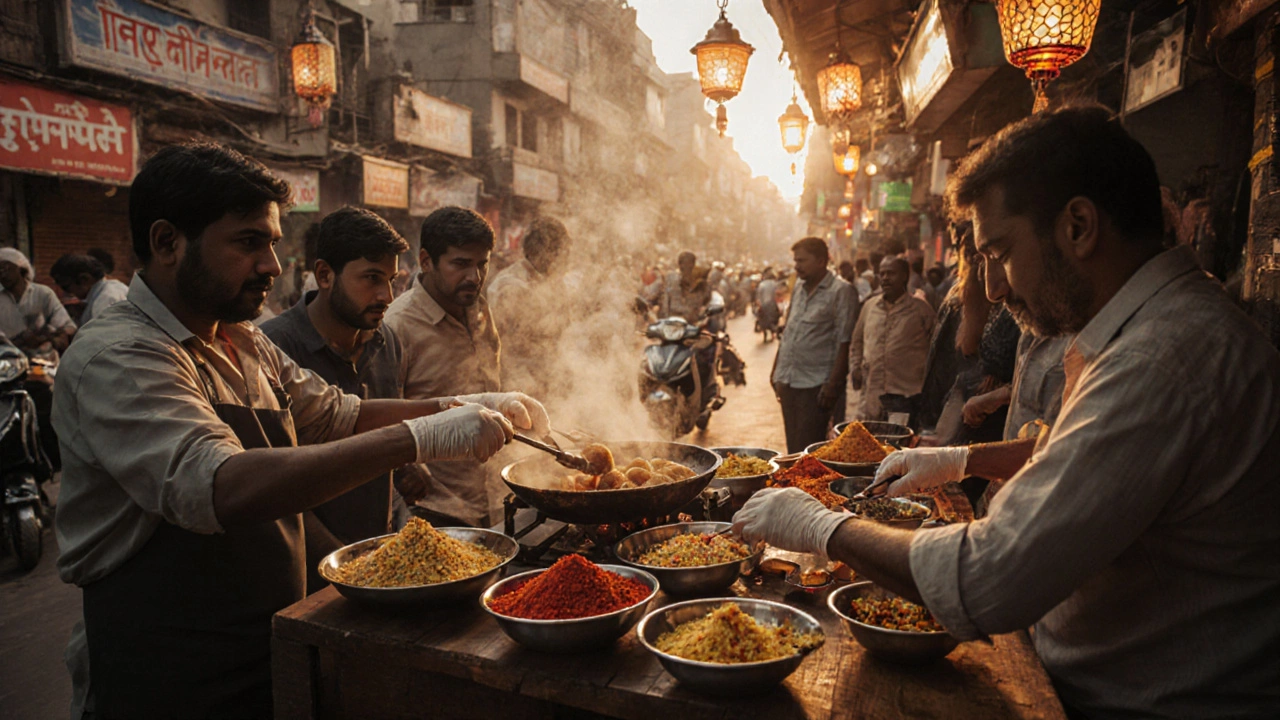Indian Street Food Safety: What You Need to Know Before You Eat
When you think of Indian street food, vibrant, spicy, and packed with flavor, sold by vendors on busy sidewalks across the country. Also known as roadside eats, it's one of the most authentic parts of traveling in India—but also one of the most misunderstood when it comes to safety. You’ve heard the warnings: "Don’t eat that," "It’ll make you sick," "Stick to bottled water." But here’s the truth: millions of locals eat street food every day without issue. The problem isn’t the food itself—it’s what you don’t know about how it’s handled.
Most travelers get sick not because the food is dirty, but because they ignore basic rules that locals follow without thinking. Food hygiene in India, the practices used to prevent contamination during preparation and serving varies wildly from stall to stall. A vendor who changes gloves between orders, uses boiling oil for frying, and serves food hot off the grill is far safer than one who leaves sauces sitting out for hours. Travel food safety, the set of habits that protect visitors from illness while eating outside isn’t about avoiding street food—it’s about choosing wisely. Look for busy stalls. Crowds mean high turnover. Fresh food. If a vendor has a line, they’re likely using ingredients that turned over within the last hour. Avoid anything sitting uncovered, especially in humid weather. Watch how they handle money and food—do they touch both without washing hands? Skip it.
Street food health risks, the dangers linked to contaminated water, raw ingredients, or poor storage are real, but predictable. The biggest culprits? Tap water used to wash produce, ice made from unfiltered water, and raw chutneys left out too long. Stick to cooked food. A samosa fried in hot oil? Safe. A salad with raw onions and tomatoes? Risky unless you see them washed in clean water right before serving. Drink only sealed bottled water or boiled tea. Even brushing your teeth with tap water can cause trouble. And don’t be fooled by fancy packaging—some bottled water is just refilled tap water. Look for the FSSAI logo on bottles, and check the seal.
You don’t need to avoid street food to stay safe. You just need to know what to look for. The same vendors who serve you piping hot pakoras in the evening are likely the ones who started their day at 4 a.m. buying fresh vegetables from the market. They know their customers. They rely on repeat business. That’s why the best advice isn’t to steer clear—it’s to eat smart. Watch how they cook. Ask questions. If they smile and show you the fresh ingredients, you’re golden. If they seem rushed or distracted, walk away. Your stomach will thank you.
Below, you’ll find real traveler stories, practical checklists, and expert tips on how to enjoy India’s legendary street food without ending up in a hostel bathroom. These aren’t generic warnings—they’re lessons learned from people who got sick, figured it out, and came back for more.
